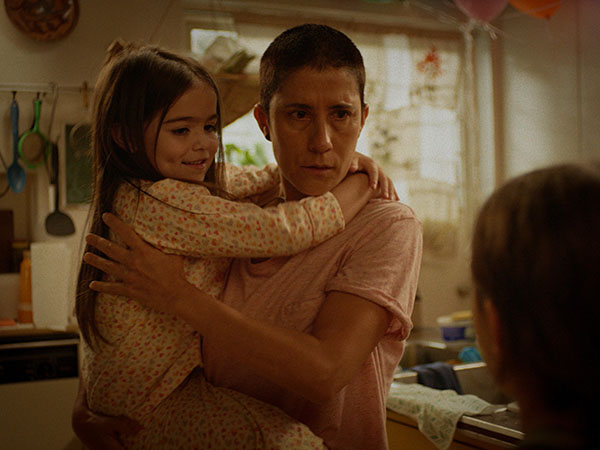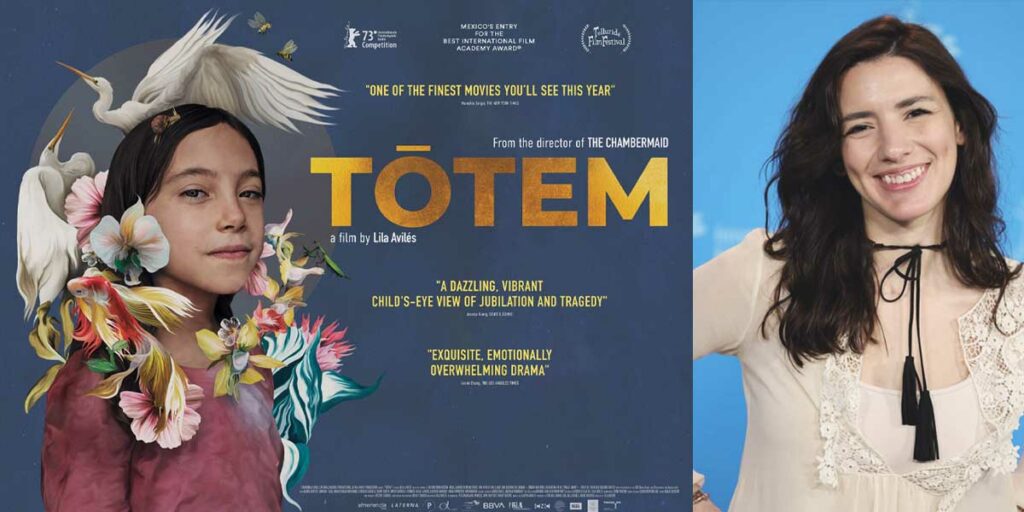We interview director Lila Avilés about her second feature film Tótem, a terrific chamberpiece following a large family in the lead up to a birthday celebration.
In Tótem, Lila Avilés’ second feature film, we accompany a Mexican family across the course of one day, as they gear up for a surprise party for one of the sons. This exquisite chamberpiece, which largely takes place at the grandfather’s sprawling house, is one of the best family dramas of the year, bolstered by an expert ensemble led by youngster Naíma Sentíes as Sol.
Avilés’ use of a single setting in Tótem is incredible, as she conjures up an organic world of drama and humour that unfurls more and more throughout our journey with the family. There is a terrific overriding emotional arc to Tótem, but also bouncy humour and unwavering dynamism. We come to discover that Sol’s father, for whom the surprise party is for, is living with terminal cancer. He stays in his room for much of the film, but the moments he shares with Sol and the rest of his family are unforgettable.
The navigation across such drastically different tones is seamless; when watching Tótem, you’re likely to laugh wildly in one scene, and cry in the next. To celebrate Tótem’s release in Mexico and the UK, we sat down with Avilés to talk about the unique chamberpiece setting of her film and how she created such a detailed and rich familial world. Read our interview with Lila Avilés below.
Lila Avilés on the Single Location of Tótem
Thank you for speaking to us today. The main location in Tótem [a large family house] is such an important character, with winding corridors, hidden areas, and so much space for the drama to play out. Could you talk about the setting of Tótem?
Lila Avilés: It was super important; the house was the other character. In Mexico, a lot of the location houses that get used are often the same house. I wanted a house that had not been filmed in before. The one in Tótem was the first house we saw and I said, “this is the one!” My team thought I was crazy. We did see some others, but I knew that this first house was the right one.

Even though it’s a large place, you still find a lot of claustrophobia within it. Characters often become trapped by conversations. They are forced to look at their own emotions and histories together. How did you achieve this?
LA: The house was largely empty, so we worked closely with the art department to get that labyrinthic feeling. It is not a massive house, not a palace or castle, but it feels real and normal. Lives have been lived in it.
It was difficult to catch the rhythm of one location. Normally you can go out and change locations, which helps maintain energy. For me, the goal was to go back and forth with the characters, but also to know and think about your own house and space.
Was Tótem always going to be set in one location?
LA: No! But it helped me learn from the centre. Every film has its limitations or its own ways to tell the story. Ultimately, it was just important to catch what the best way to tell the story was. It doesn’t matter about directorial style; the story is more important.
Lila Avilés on the Rich & Detailed Worldbuilding in Tótem
Diego Tenorio’s cinematography in Tótem is fantastic. He keeps the drama flowing, but there are also quiet moments of reflection. How much value did you place on those moments? What was it like collaborating with Diego?
Lila Avilés: Diego is wonderful. We are going to be friends for life. What I think is beautiful about Tótem is that I invited him because he made a film which was very similar to a Andrei Tarkovsky film. It was about the cinematic experience and all of these visions! So for Tótem, I said, “be open!” It obviously isn’t the opposite, as I wanted it to be beautiful, but it is not that kind of film.
Cinematographers have the best job in the world. They change between one director to another, like rockstars almost. Everyone loves them! When you’re filming, you are so close to the DOP. I was so happy to experience this with Diego, and I know he enjoyed working in a different way.
You have three different age groups in Tótem: the young children, middle-aged adults, and the elderly grandparents. All of their views on death differ. How did you incorporate these different viewpoints?
LA: What’s nice about family and friends is that everyone is so unique. Everyone has their own way of communicating, of doing things. Sometimes you hate it, but it’s what you have! You can’t do anything about that. What is wonderful about the kids in Tótem is that they are so alive. They are so fun but ask so many questions. When you’re an adult, it gets harder and harder to do this. What I like about each character in Tótem is that each one has their own way of expressing themselves in hard times. Sometimes the people you know most are still such strangers to you.
How did you combine the humour of Tótem with the more serious, dramatic elements?
LA: I love to laugh! Even in my worst moments, I will do something strange. I don’t think too much; I didn’t study cinema. There is a lot of hard work, but there is a lot of intuition, of catching that energy for the film.
Thank you for speaking to us today.
This interview has been edited for length and clarity.
Tótem will be released in UK cinemas on December 1, 2023. Read our review of Tótem below!

